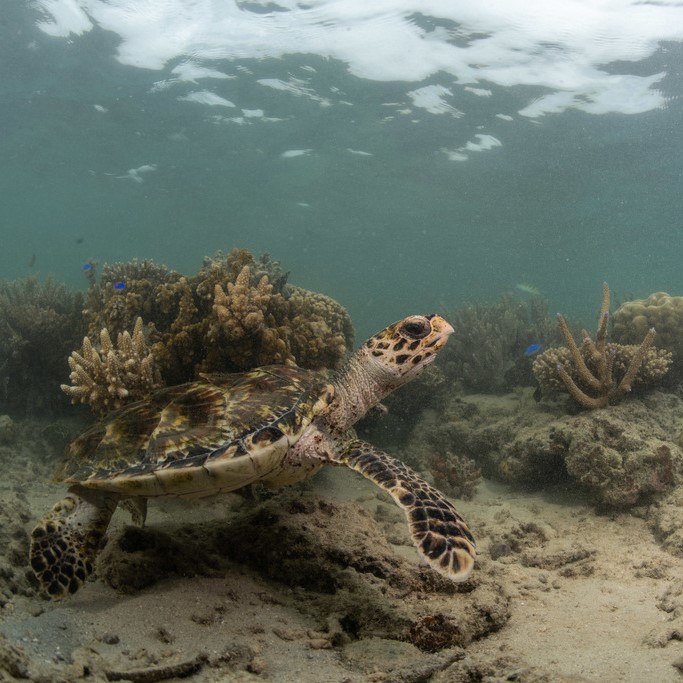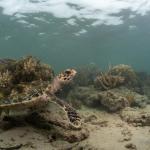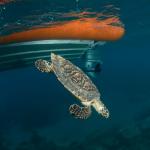- Home
- Herpetofauna Index
- Native
- Eretmochelys Imbricata
Eretmochelys imbricata
Hawksbill turtle
Eretmochelys imbricata
(Linnaeus, 1766)

Length: up to 1.1 metres
Weight: 40-100kg (up to 130 kg)
Description
A beautiful marine turtle species characterised by its narrow hawk-like beak and uniquely beautiful and distinctive shell. This species was also the first reptile discovered to express biofluorescence.
Identification
Distinguished from other marine turtles by its narrow head and beak, as well as by its heart-shaped carapace (shell) which is serrated and typically ornately patterned with orange, yellow, and brown splotches, stripes, and spots, the shell is arranged with 5 vertebral scutes (shields) running down the centre of its carapace, and 4 pairs of costal scutes (shields) arranged on either side.
Distribution
A vagrant (outside its normal range) in New Zealand waters.
This species typically occurs throughout the sub-tropical and tropical waters of the Pacific, Indian, and Atlantic Oceans but has been sighted several times in the waters off of the northern North Island of New Zealand.
Diet
The narrow head and beak in this species are specifically adapted to reach sponges, its main prey, which often takes refuge in crevices in reef systems. Hawksbill turtles have also been observed feeding on a range of anemones, squids, shrimp, crustaceans, and shellfish. The diet of this species (mainly sponges) leads to the flesh of this species being toxic.
Ecology and habitat
The Hawksbill turtle spends the majority of its time around reef systems, lagoons, and mangroves but does spend a significant amount of time migrating across the open ocean between foraging grounds.
Life expectancy
Unknown, but likely in excess of 50 years.
Social structure
Solitary, but females congregate at nesting grounds.
Breeding biology
Hawksbill turtles do not breed in New Zealand.
Females nest every 2-4 years, producing several clutches per season. Nests consist of around 70-200 soft-shelled eggs, which are buried in deep holes that they dig with their large flippers. Eggs hatch after 60-75 days.
Disease and threats
The Hawksbill turtle is a host for many of the parasites, and diseases present in other marine reptiles, none of which pose a significant risk to the survival of the species. Of more concern are the many human-induced issues, resulting from the contamination of their habitat. The most significant being the hunting of this species for its scutes, which are often used in tortoiseshell jewellery. Boat-strike, light pollution, exploitation of animals and eggs for food, as well as mortality as bycatch represent additional threats to their survival.
References
van Winkel, D., Baling, M., Hitchmough, R. 2018. Reptiles and amphibians of New Zealand – a field guide. Auckland university press, Auckland New Zealand.





